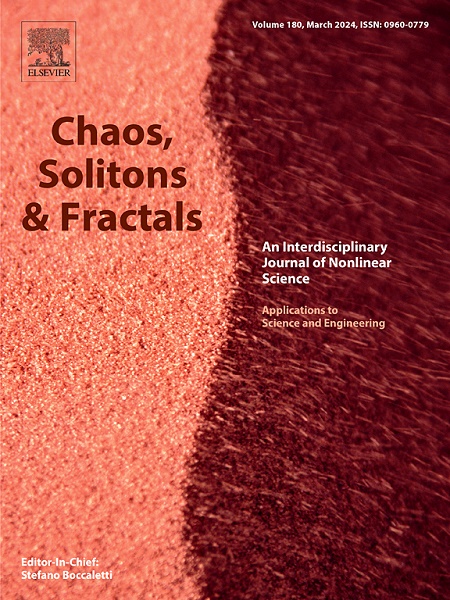Optimized event synchronization method: Identifying synchronous spatiotemporal patterns of extreme events
IF 5.3
1区 数学
Q1 MATHEMATICS, INTERDISCIPLINARY APPLICATIONS
引用次数: 0
Abstract
Extreme events and their evolution and development have become important topics in various fields such as meteorological science, social science, and neuroscience. Statistical modeling methods are commonly used to study the interdependence between these extreme events. In this paper, we propose an optimized event synchronization (OES) method. By proposing minimum delay, this method optimizes the identification criteria of event synchronization. In cases where events are temporally clustered, the OES method enhances the recognition ability of event synchronization features. The OES method is not affected by event aggregation and performs more stably under different parameters. Based on the synchronous relationship and synchronous extent of high-traffic events in a communication system, a functional communication network is constructed. By analyzing the topological characteristics of this functional communication network, we aim to study the synchronous spatiotemporal patterns of high-traffic events, including the synchronous area, the extent of synchronization impact and the spatial continuity.
优化事件同步方法:识别极端事件的同步时空模式
极端事件及其演变与发展已成为气象科学、社会科学、神经科学等多个领域的重要课题。统计建模方法通常用于研究这些极端事件之间的相互依存关系。本文提出了一种优化的事件同步(OES)方法。该方法通过提出最小延迟,优化了事件同步的识别标准。在事件临时聚类的情况下,OES方法增强了对事件同步特征的识别能力。OES方法不受事件聚合的影响,在不同参数下性能更稳定。基于通信系统中高流量事件的同步关系和同步程度,构建了一个功能通信网络。通过分析该功能通信网络的拓扑特征,研究高流量事件的同步时空格局,包括同步区域、同步影响程度和空间连续性。
本文章由计算机程序翻译,如有差异,请以英文原文为准。
求助全文
约1分钟内获得全文
求助全文
来源期刊

Chaos Solitons & Fractals
物理-数学跨学科应用
CiteScore
13.20
自引率
10.30%
发文量
1087
审稿时长
9 months
期刊介绍:
Chaos, Solitons & Fractals strives to establish itself as a premier journal in the interdisciplinary realm of Nonlinear Science, Non-equilibrium, and Complex Phenomena. It welcomes submissions covering a broad spectrum of topics within this field, including dynamics, non-equilibrium processes in physics, chemistry, and geophysics, complex matter and networks, mathematical models, computational biology, applications to quantum and mesoscopic phenomena, fluctuations and random processes, self-organization, and social phenomena.
 求助内容:
求助内容: 应助结果提醒方式:
应助结果提醒方式:


